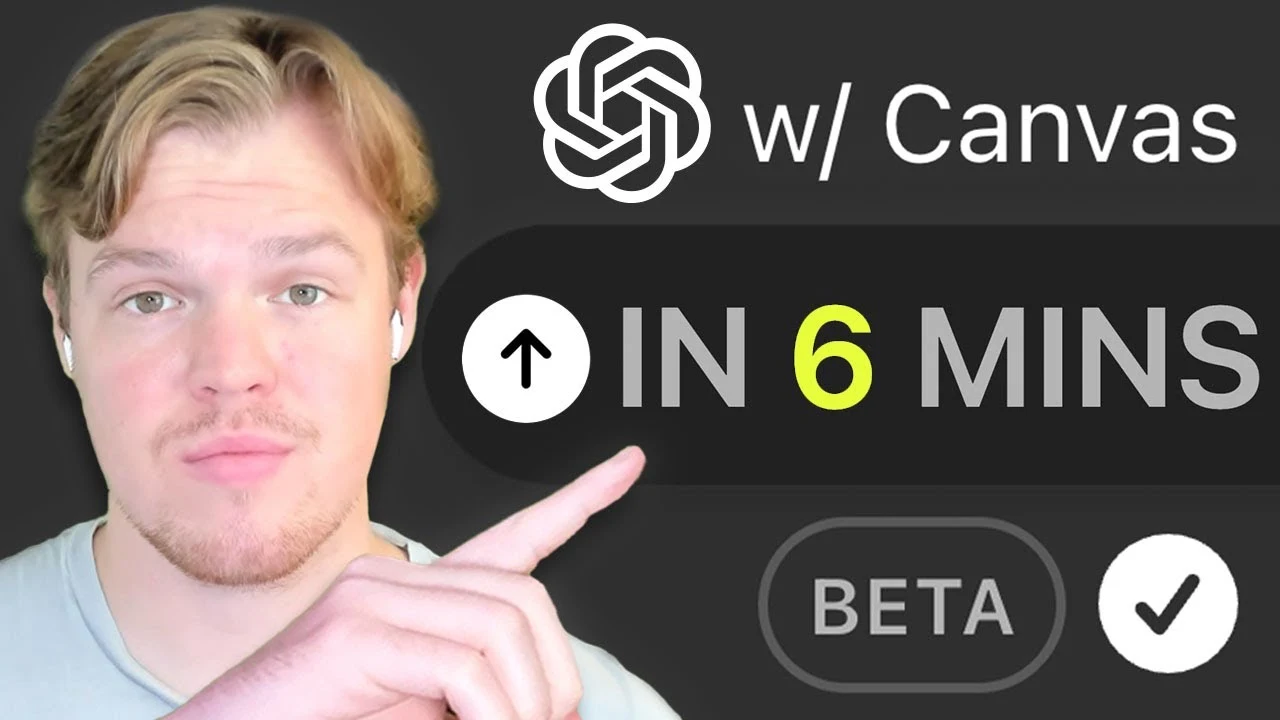Coding can often feel like navigating a maze, with bugs and errors lurking around every corner. It’s a common problem that many developers face daily. But what if there was a tool that could help clear the path? OpenAI’s ChatGPT Canvas might just be that tool, offering features like code porting and an undo function to make your coding journey smoother. Corbin Brown has put together a quick overview video to help you get started going through everything you need to know in just six minutes.
OpenAI has introduced ChatGPT Canvas, a powerful tool designed to elevate your coding experience and streamline your workflow. This feature seamlessly integrates into the ChatGPT environment, providing developers with an intuitive interface for debugging, tweaking code, and exploring new programming shortcuts. Whether you’re a seasoned programmer or just starting your coding journey, ChatGPT Canvas offers a range of features to enhance your productivity and efficiency.

Exploring the User Interface and Features
ChatGPT Canvas features a user-friendly interface that allows you to directly edit code files within the platform. This streamlined setup eliminates the need to juggle multiple applications, allowing you to focus solely on development. The Canvas includes a variety of convenient shortcuts, such as:
- Adding comments and console logs with ease
- Speeding up coding tasks through efficient tools
- Providing bug fixes and code translation across different programming languages
One notable feature is the back arrow function, which functions similarly to the undo command in other software. This tool allows you to quickly revert changes, ensuring that you can experiment with your code without fear of permanent mistakes. By using these features, you can significantly boost your coding efficiency and productivity.
Understanding Functionality and Limitations
While ChatGPT Canvas is capable of handling multiple pages, it’s important to note that it may not always adhere to best practices in code structuring. This limitation highlights the need for extra oversight when working on complex projects. Additionally, the Canvas currently lacks the ability to render code in a local development environment, which could be a drawback for developers accustomed to local testing.
It’s crucial to understand that ChatGPT Canvas is primarily designed for debugging and modifying existing code files, rather than managing multiple files simultaneously. This focus on specific tasks may restrict its use in larger, more intricate projects. However, for developers seeking a tool to enhance or debug code, ChatGPT Canvas proves to be a valuable asset.
ChatGPT Canvas Beginners Guide
Here are a selection of other articles from our extensive library of content you may find of interest on the subject of OpenAI’s new ChatGPT Canvas feature :
Positioning in the AI Coding Tool Landscape
In the rapidly evolving world of AI coding tools, ChatGPT Canvas finds itself in good company. Platforms like Cursor AI offer similar capabilities, catering to users who require targeted solutions for enhancing or debugging code. ChatGPT Canvas distinguishes itself by providing a focused approach to code modification and debugging, making it a competitive choice for developers with specific needs.
While OpenAI’s Canvas may not be a comprehensive solution for all coding requirements, its specialization in certain areas makes it a valuable addition to any developer’s toolkit. As OpenAI continues to refine and expand the capabilities of ChatGPT Canvas, it has the potential to become an even more robust and indispensable tool for programmers worldwide.
Final Thoughts
ChatGPT Canvas represents a significant step forward in the realm of AI-assisted coding tools. Its intuitive interface, powerful features, and focus on specific coding tasks make it an attractive option for developers seeking to enhance their workflow. While it may have limitations in terms of code structuring and local rendering, its strengths lie in its ability to streamline debugging and code modification processes.
As OpenAI continues to invest in the development of ChatGPT Canvas, it demonstrates their commitment to supporting developers and competing in the ever-evolving landscape of integrated development environments (IDEs). With the potential for further enhancements and expansions, ChatGPT Canvas is poised to become an increasingly valuable tool for programmers of all skill levels, empowering them to unlock their full coding potential. For more information jump over to the official OpenAI website.
Media Credit: Corbin Brown
Filed Under: AI, Guides
Latest TechMehow Deals
Disclosure: Some of our articles include affiliate links. If you buy something through one of these links, TechMehow may earn an affiliate commission. Learn about our Disclosure Policy.
